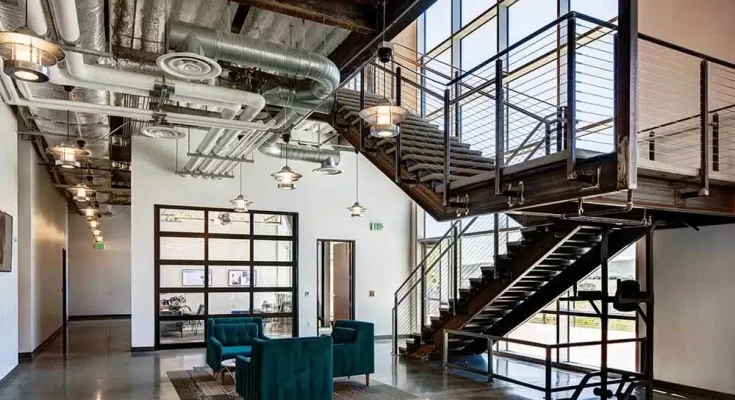Space efficiency is a crucial aspect of modern architectural design. As cities grow denser and real estate prices soar, architects face the challenge of creating functional and comfortable spaces within limited areas. It involves clever design choices, multifunctional elements, and intelligent storage solutions. Efficient space use makes a building more functional and reduces construction and maintenance costs. The foundation of space-efficient design lies in thorough planning. This includes considering the number of people using the area, their daily activities, and any special requirements.
- Embrace open floor plans
Architects use open floor plans to maximize space efficiency. Removing unnecessary walls and partitions improves the flow between spaces and creates a sense of spaciousness.
- Utilize vertical space
When floor space is limited, looking up can reveal untapped potential. Making use of vertical space is a critical strategy in space-efficient design. This can include installing floor-to-ceiling shelving, creating loft areas for sleeping or storage, or using tall windows to draw the eye upward and create an illusion of more space.
- Incorporate multifunctional furniture
When furniture serves multiple purposes at once, it is a game-changer regarding space-efficient design. Examples include Murphy beds that fold into the wall when not in use, dining tables that double as workstations, or ottomans with hidden storage. Architects can work with interior designers to select or custom-design furniture that complements the overall space-saving strategy.
- Design intelligent storage solutions
Adequate storage space is important for maintaining a clutter-free, spacious environment. Built-in storage, such as recessed shelving or under-stair cabinets, can use otherwise wasted space. In kitchens, pull-out pantries and corner carousel units maximize cabinet space. For bedrooms, built-in wardrobes that extend to the ceiling take advantage of vertical space. read more about innovative door solutions for space-efficient design.
- Optimise natural light
Good lighting can make a space feel larger and more open. Maximizing natural light through strategically placed windows, skylights, or light tubes saves energy and creates a sense of spaciousness. In areas where privacy is a concern, frosted glass or cleverly angled windows can allow light in while maintaining seclusion.
- Create flexible spaces
Designing rooms that can adapt to different uses throughout the day or as needs change over time is another effective strategy for space efficiency. This might involve using movable partitions to divide larger spaces or creating rooms with neutral designs that can easily transition between functions.
- Use space-saving doors
Traditional swing doors can take up much space on your floor. Alternatives like pocket, sliding, or barn doors can free up this space for other uses.
- Consider minimalist design
A minimalist approach to design can contribute significantly to space efficiency. Creating a minimalist design gives the impression of openness and calm by focusing on essential elements and avoiding clutter. A space does not need to feel stark or empty; instead, it needs to be carefully designed so that every item serves a purpose in function and form.
Modern technology can help maximize space efficiency. Smart home systems can eliminate the need for bulky control panels, while wireless charging stations can reduce cable clutter. In kitchens, induction cooktops can be installed flush with countertops, creating a more usable surface area when not in use. Space efficiency in architectural design depends on a thoughtful, holistic approach. The key lies in understanding the occupants’ needs and designing with functionality and aesthetics in mind.




